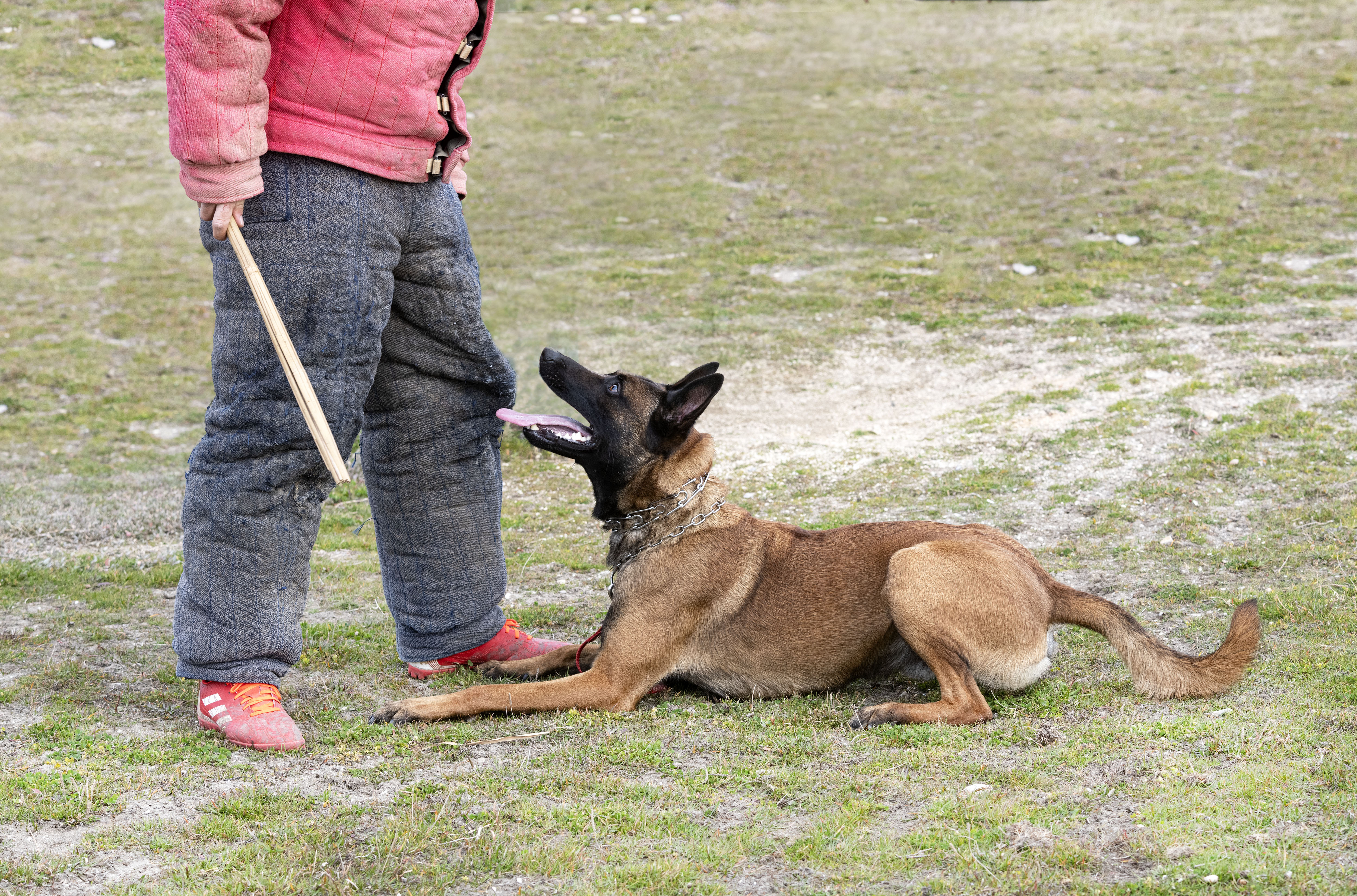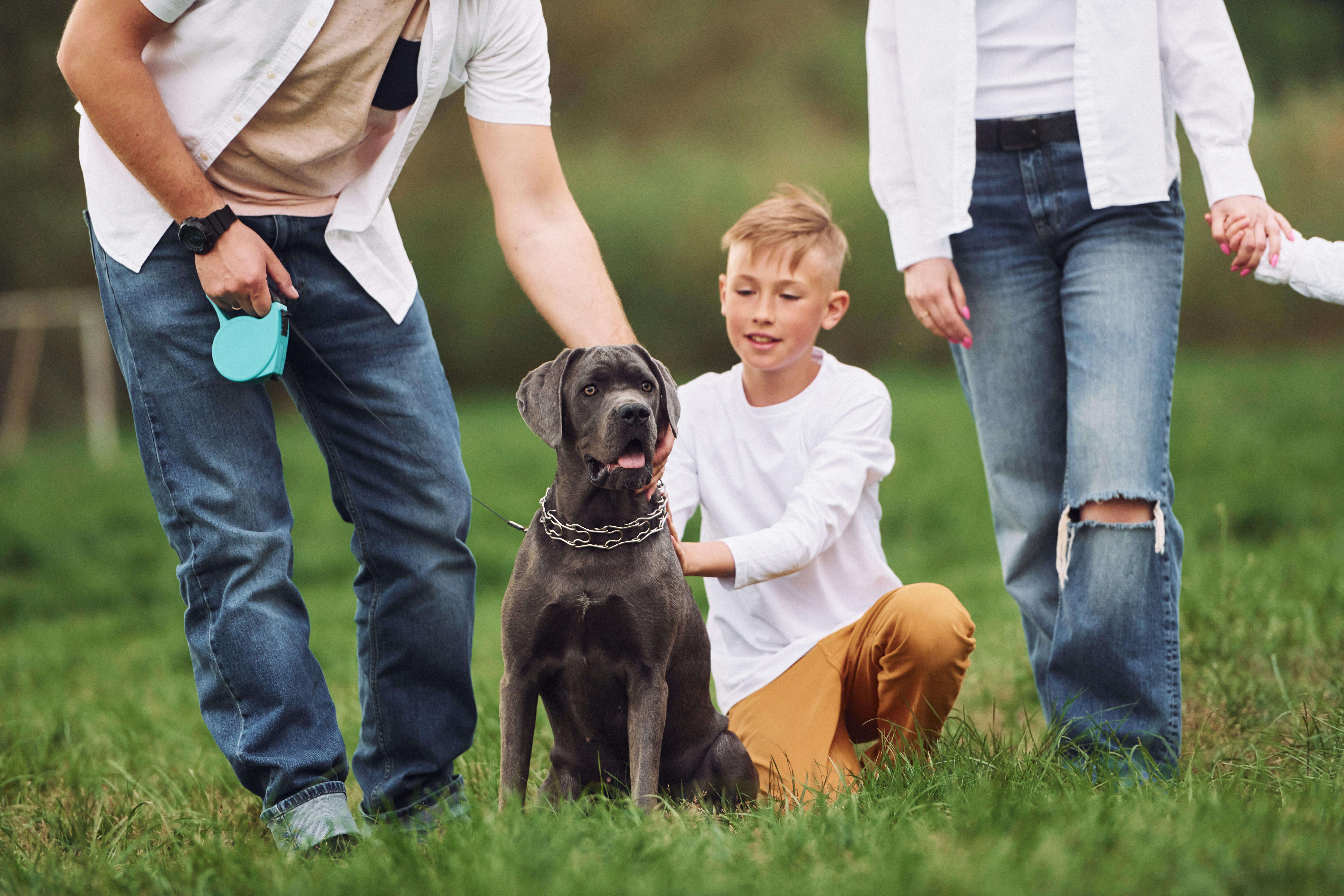






“Elite training,” “unmatched performance,” “custom protection solutions”—you’ve heard it all before. And after a while, it’s easy to tune it out, isn’t it? Just another sales pitch.
Understand this, though: when it comes to protection dogs, there’s no room for shortcuts, guesswork, or second-best efforts. The training required to turn a dog into a trusted protector is not just a process—it’s a craft honed through expertise and experience.
At Vanguard Protection Dogs, we’ve elevated this craft into an art, rigorously refining a multi-stage training program that surpasses standard protocols. We don’t just train dogs; we build partnerships—grounded in trust, respect, and purpose.
And if your needs go beyond what’s typical, we’ve got you covered. From initial consultations to fully customized training programs, we work with you to ensure your dog fits smoothly into your life and specific security needs.
Now, what we call “protection dog training” is distilled into five distinct levels, each building upon the skills established in previous stages. This structured approach ensures consistent progress and allows for precise skill development to create a truly elite protector, step by step.
In the following sections, we’ll break down these levels of protection dog training in detail. So stay with us.
Every great protector starts with the basics. A dog that can’t follow simple commands won’t excel when the stakes are high.
We start with:
 Basic obedience training, which establishes a foundation of trust and communication, covers essentials like:
Basic obedience training, which establishes a foundation of trust and communication, covers essentials like:
In most cases, this stage also includes socialization, exposing the dog to various environments, people, and other animals to prevent fear or aggression in non-threatening situations.
From there, we advance to:
Advanced obedience training—a transformative phase where their skills are sharpened under real-world conditions.
Here, the focus is on honing the dog’s ability to perform under distractions—whether it’s noisy environments, unfamiliar people, or high-stress scenarios. Commands are no longer just followed—they’re executed with split-second precision.
Advanced obedience challenges the dog to think independently while maintaining unshakable focus on their handler.
For example, a protection dog must be able to:
This stage demands intense mental and physical engagement, pushing the dog to their limits and revealing their true potential.
By the end of this phase, we can tell if your dog is predictable, reliable, and poised for protection work.
Alert training transforms your protection dog from a passive observer into an active guard.
This critical phase develops your dog’s natural protective instincts into a refined system of threat detection and communication—without crossing the line into aggression.
During alert training, dogs master several key competencies:
Your dog learns to systematically monitor their environment, paying special attention to entry points and blind spots around your property.
They develop an internal “map” of what’s normal and what requires attention.
Through careful conditioning and real-world scenarios, dogs learn to recognize truly suspicious behavior patterns.
They can differentiate between someone simply walking past your home and someone showing unusual interest in your property.
Beyond basic barking, dogs are trained in nuanced alert behaviors. They might use different vocalizations, body postures, or specific movements to communicate the nature and urgency of potential threats to their handler.
Your dog learns to maintain appropriate alert levels across different settings—from your home to public spaces—adjusting their vigilance based on the situation while avoiding false alarms.
Alert training is often enough for people who want a dog that deters intruders without engaging physically. The presence of an alert dog can discourage potential threats while maintaining a safe environment.

Through rigorous training, your dog will master a complex repertoire of engagement commands. This includes controlled bite work, bark-and-hold positions, and, most importantly, instant release commands.
The emphasis remains on control—your dog must be able to disengage immediately upon command, no matter how heightened their arousal.
Protection dogs are trained to maintain their defensive capabilities in a variety of environments. Whether maneuvering a crowded urban street or safeguarding an isolated rural property, they learn to adapt their strategies while staying vigilant.
At the same time, they remain highly attuned to your commands and body language, creating smooth coordination for split-second responses to emerging threats.
Advanced protection training doesn’t just prepare your dog for the obvious threats—it primes them for the invisible ones.
The concealed weapons. The coordinated attacks. The moments where chaos demands calm, and action cannot wait for a second guess.
This isn’t training for the average household. It’s for the individuals whose daily lives demand an uncompromising degree of security:
At this stage, your dog is more than a protector. They’re a partner, fine-tuned to match your needs, your risks, your world.
These dogs are taught to read a room, adapt to the chaos, and make decisions that balance action with restraint. Their protection remains consistent, intelligent, and steadfast.
Not all protection dogs are built for the same path. Some rise beyond the standard call of duty, stepping into roles so tailored, so specific, they blur the line between instinct and profession.
Now, these aren’t typical protectors. They’re specialists. Experts in their field.
Specialized training takes a capable protection dog and transforms them into a highly skilled operative. These dogs become indispensable assets in situations where ordinary measures fall short.
Well, a blend of heightened intuition, rigorous training, and relentless focus.
These aren’t tasks for the everyday companion but for dogs that live for the challenge, the job, the mission.
These dogs are trained to combine impeccable obedience with advanced protection skills, all while maintaining a low profile.
They’re not there to draw attention, only to respond when needed, blending security with discretion.
Whether it’s explosives, narcotics, or other contraband, detection dogs are honed to sniff out danger before it ever surfaces.
When disaster strikes, and every second counts, these dogs step up.
Whether locating missing persons or maneuvering debris after a disaster, they bring a combination of determination and heart to the most critical of missions.
These dogs are taught to think, to problem-solve, to act decisively in moments where hesitation could cost lives.
While family protection dogs are extraordinary in their own right, specialized training elevates a dog to a league of its own. These are the dogs you turn to when the stakes are high and the margin for error is nonexistent.
A protection dog isn’t a gadget you turn on or off; it’s a partner who thrives on clear guidance and consistent care.
Before diving in, here’s what you need to know:

Breeds like German Shepherds, Belgian Malinois, and Rottweilers are often the top contenders, celebrated for their sharp minds, loyalty, and natural protective instincts.
But even within these breeds, individual temperament varies. A dog with too much fear or aggression won’t succeed, and neither will one lacking focus or confidence.
Regular practice and reinforcement are essential to keep their skills sharp. Without it, even the best-trained dogs can grow rusty or lose their edge.
Make training a part of your routine—short, focused sessions to ensure your dog stays disciplined and responsive.
Protection training is no DIY project. Without proper knowledge, you risk creating a dog that’s either ineffective or, worse, dangerous.
Professional trainers bring years of expertise, ensuring your dog learns not just how to protect but also when not to act.
A well-trained protection dog is confident and controlled—not reactive or unpredictable.
Every lifestyle demands a different kind of protection. Are you a family living in a peaceful suburb? A dog with alert training might suffice—someone to sound the alarm and deter potential threats.
But if you’re a business owner, a high-profile individual, or someone with more substantial security concerns, specialized training might be a better fit.
Understanding what you need helps ensure you and your dog are prepared for the realities of your daily life.
Ethical training practices prioritize the dog’s well-being and build a strong bond between the handler and the dog.
Methods that rely on positive reinforcement and clear communication are not only more humane but also more effective.
Avoid trainers who use fear or excessive force, as these approaches can create unpredictable and anxious dogs.
Selecting a protection dog is a significant decision.
Here’s a checklist to guide your choice:
🐾Assess your lifestyle. Consider your daily routine, family dynamics, and security concerns.
🐾Evaluate breeds. Research breeds that align with your needs and experience level.
🐾Meet the dog. Spend time with the dog to assess their temperament and compatibility.
🐾Check credentials. Work with reputable trainers or organizations with proven experience in protection dog training.
🐾Plan for ongoing support. Ensure you have access to trainers for follow-up sessions or additional guidance.
Every detail. From our rigorous multi-level training programs to our smooth concierge onboarding process. We design every step with one goal in mind: excellence.
No shortcuts. No compromises.
Whether you need a family guardian, an executive companion, or a specialist trained for high-stakes scenarios, our dogs excel where others simply meet expectations.
But that’s not all… We also offer comprehensive training programs for dog owners who want to stay ahead in their protection strategies.
These programs are grounded in real-world, high-stress scenarios, equipping both you and your dog with the skills to handle whatever life throws your way.
Your Next Step? Get in touch today!
We’ll analyze your specific needs, discuss suitable protection strategies, and design a custom solution that exceeds your expectations.